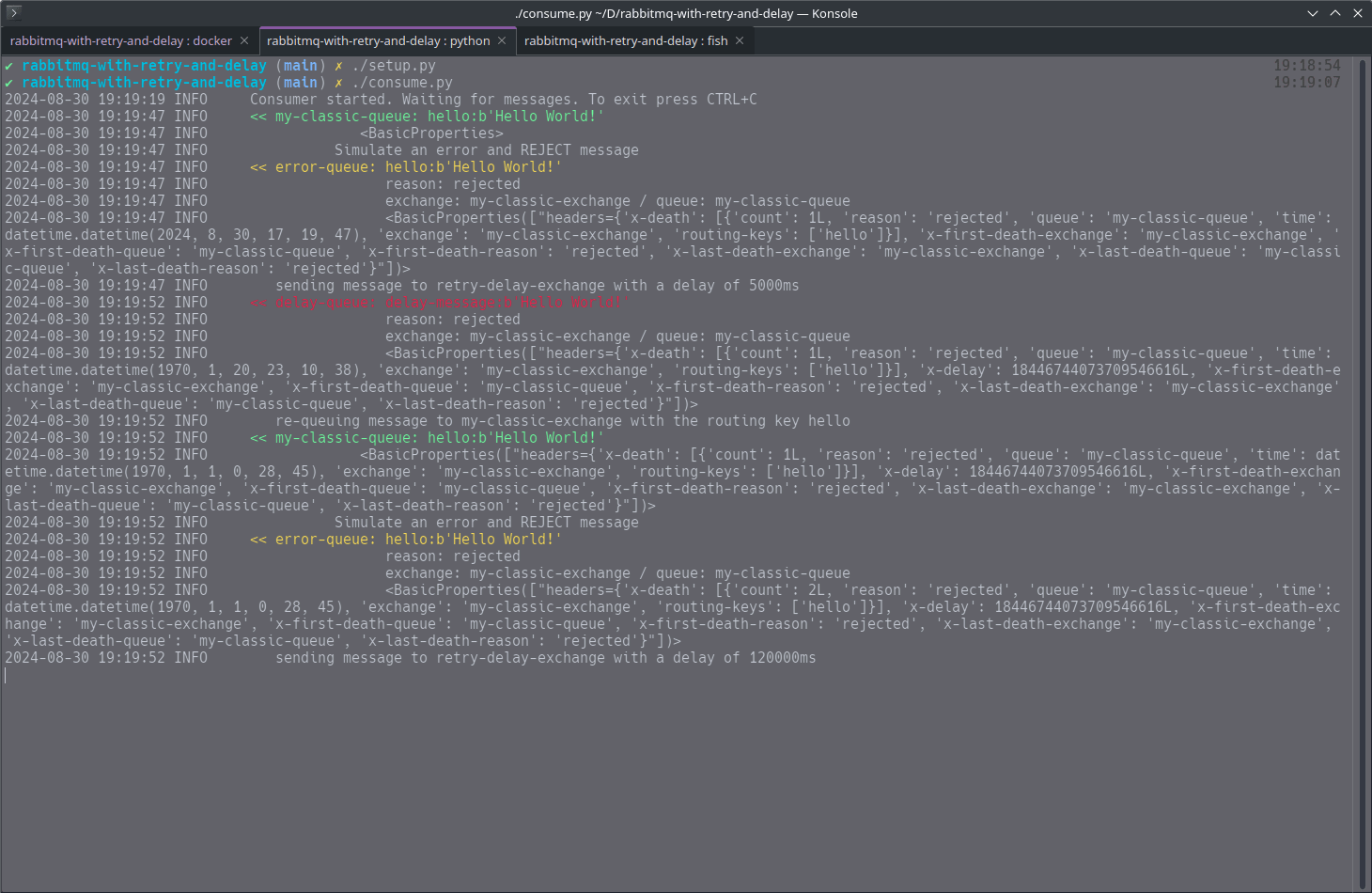RabbitMQ: Automatic retries with increasing delay
I have finally implemented a solution to automatic retries for a RabbitMQ message queue. I have pointed out the problem of retrying failed messages with a delay in a previous post.
I am still sad there is no ready-to-use solution and you have to write code yourself to make this work, but well. At least it is a solution.
You can find an example project in python here: https://github.com/andreas-mausch/rabbitmq-with-retry-and-delay
The concept is heavily inspired by https://devcorner.digitalpress.blog/rabbitmq-retries-the-new-full-story/.
1. Breakdown
So we have a bunch of extra exchanges and queues for this approach.
The main difference to Cyril's solution is that we don't re-send the message to a queue directly, but rather to it's original exchange with it's routing key.
One good thing though is: We can use this retry-block for as my queues as we like. It doesn't have to be repeated for each queue. Phew.
So we can set up a number of retries in our code, each having a delay time.
When a message still couldn't be delivered after the last delay, it
is finally sent to the retry-dead-letter-exchange.
There, an admin can look regulary which messages had problems to be consumed.
In the example code the retry delays are:
- 5 seconds
- 2 minutes
- 30 minutes
- 6 hours
- 2 days
My example also covers the case of having a quorum queue, and here it is a bit disappointing:
Even though you can still use the retry mechanism via x-delivery-limit, the retries will
still be immediate.
If you want to have increasing delay here as well, you must skip the automatic quorum queue
mechanism by setting requeue=False in case of an error, so the dead-letter-exchange
(retry-error-exchange) will be used instead.

2. Why do we need a delay exchange?
First, I was surprised we need that second exchange in the retry-block. Why not just have a single one?
The reason is: In order for x-delay to work, we need an exchange of the type x-delayed-message.
So we have the choice of either making our normal exchanges all of this type, or
rather have only a single place for this exception.
And the retry-error-exchange cannot be the exchange to be x-delay-message, because
at this point the message doesn't have the x-delay header yet.
3. Error handling
So we have covered the case something goes wrong inside our consumer.
In case there is a problem in the consumers of the retry-error-queue or the retry-delay-queue themselves,
we define a dead letter exchange for them as well, and it is also the retry-dead-letter-exchange.
Now we keep all non-consumable messages for analysis: even if all retries failed and even if there was a processing problem inside the retry handlers.
4. RabbitMQ Delay Plugin
One more downside to this solution: We cannot just use the basic RabbitMQ docker image anymore, because we need to have the delayed-message-exchange enabled.
See Scheduling Messages with RabbitMQ.
I use heidiks/rabbitmq-delayed-message-exchange:3.13.3-management for now, but we'll
see how well this is maintained over time.